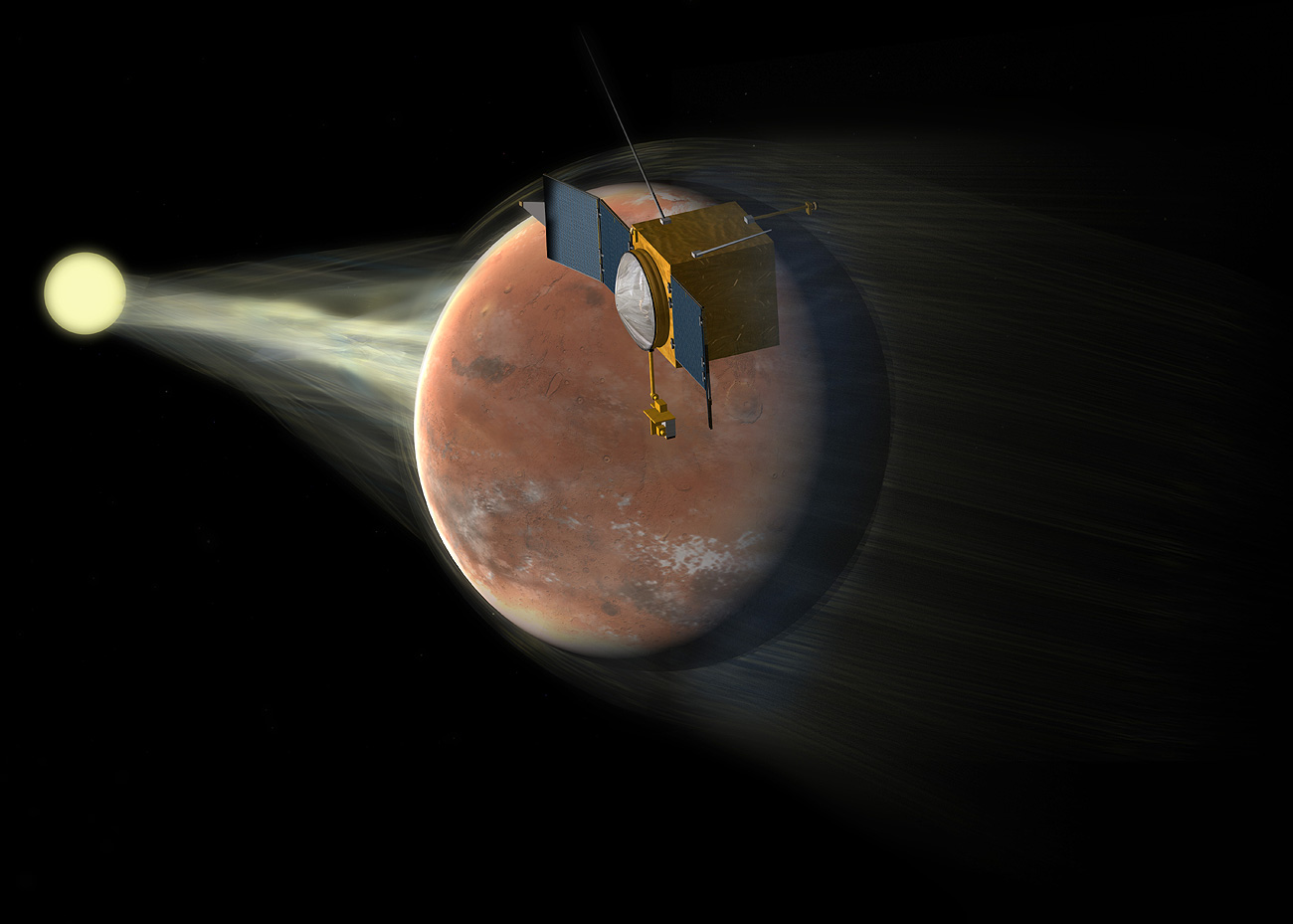
Think you've got out-of-this-world poetry skills? Here's your chance to send a short piece through the cold depths of space, all the way to Mars.
NASA is asking the public to submit haikus — three-line poems with a standard 5-7-5 syllable structure — to ride aboard its Maven Mars orbiter, which is slated to launch toward the Red Planet this coming November.
It won't be easy; just three haikus will make it onboard the Maven spacecraft. You can submit poems (which must be in English) until July 1, and an online public vote to select the three winners will open on July 15.
You can still be part of the mission even if your masterpiece doesn't make the cut, however. The DVD containing the haikus will also carry every name submitted via the Maven mission's "Going to Mars" public-outreach campaign, officials said.
"The Going to Mars campaign offers people worldwide a way to make a personal connection to space, space exploration, and science in general, and share in our excitement about the Maven mission," Stephanie Renfrow, lead for the Maven education and public outreach program at the University of Colorado's Laboratory for Atmospheric and Space Physics (CU/LASP), said in a statement.
To participate in the campaign or learn more about it, visit http://lasp.colorado.edu/maven/goingtomars
The $670 million Maven mission — short for Mars Atmosphere and Volatile EvolutioN — is slated to launch on Nov. 18 and arrive in an elliptical orbit around Mars on Sept. 22, 2014.
Get the Space.com Newsletter
Breaking space news, the latest updates on rocket launches, skywatching events and more!
Mars has lost most of its atmosphere to space over the eons. Scientists hope Maven will help them understand how this happened, and what the consequences have been for the Red Planet's ability to support life as we know it.
The Maven team sees the "Going to Mars" effort as a chance to get the public excited about space science and exploration.
"This new campaign is a great opportunity to reach the next generation of explorers and excite them about science, technology, engineering and math," Maven principal investigator Bruce Jakosky, also from CU/LASP, said in a statement. "I look forward to sharing our science with the worldwide community as Maven begins to piece together what happened to the Red Planet's atmosphere."
Follow Mike Wall on Twitter @michaeldwall and Google+. Follow us @Spacedotcom, Facebook or Google+. Originally published on SPACE.com.
Join our Space Forums to keep talking space on the latest missions, night sky and more! And if you have a news tip, correction or comment, let us know at: community@space.com.

Michael Wall is a Senior Space Writer with Space.com and joined the team in 2010. He primarily covers exoplanets, spaceflight and military space, but has been known to dabble in the space art beat. His book about the search for alien life, "Out There," was published on Nov. 13, 2018. Before becoming a science writer, Michael worked as a herpetologist and wildlife biologist. He has a Ph.D. in evolutionary biology from the University of Sydney, Australia, a bachelor's degree from the University of Arizona, and a graduate certificate in science writing from the University of California, Santa Cruz. To find out what his latest project is, you can follow Michael on Twitter.









